|
|
Post by Penguin45 on Aug 26, 2013 18:14:47 GMT
I wonder if all of the stainless exhaust down pipes were bent this way? It seems strange as the rubber joints were the norm. Bent it up to fit the car. It had the UJ shafts on at the time. Presumably they didn't have an actual pattern to bend to. I guess you were unable to bend it out of the way and repair the pipe? I spaced it back on the lower clamp. I thought it cleared, but evidently not. The electrolytic corrosion where the new down pipe meets the stainless exhaust will probably corrode faster but I don't think the mainfold / down pipe joint will have any greater effect than it does on the standard exaust. An interesting experiment. Hopefully it won't be on for too long. Ady and I are planning to make an LCB manifold over the winter. Got a spare engine and 'box to mock it up on. Not sure why they never made a collar for the manifold and down pipe to allow them to be bolted together to save hours of bent backs and tins of sealant. The new one will end in a flange with at least two bolt holes in it.  Chris. |
|
|
|
Post by Penguin45 on Aug 26, 2013 18:23:29 GMT
And today's news is that we jumped in the car to shoot over to Bradford to get Theo some paint. 400 yards to the end of the street saw the car on the nearside bump stops. Once round the roundabout and back home again. And one of the HIFs is tiddling through the overflow. That's my evenings this week sorted then.  N/s/f displacer has failed at the hose joint (of course). Tony is getting one over to me for Wednesday. I have a new float cut-off valve to hand as well. Should be all done for Hutton-le-Hole on Sunday. Maybe. Chris. |
|
|
|
Post by dave1800 on Aug 27, 2013 1:10:38 GMT
You do seem to be having an unfair amount of misfortune with your car and your wife's car this year. I understand your wife's car getting revenge for all the nasty things you say about it but not the Wolseley.  We've not heard from Tommy for a while so assume he has found the magic formula for not having problems with his Landcrab? David And today's news is that we jumped in the car to shoot over to Bradford to get Theo some paint. 400 yards to the end of the street saw the car on the nearside bump stops. Once round the roundabout and back home again. And one of the HIFs is tiddling through the overflow. That's my evenings this week sorted then.  N/s/f displacer has failed at the hose joint (of course). Tony is getting one over to me for Wednesday. I have a new float cut-off valve to hand as well. Should be all done for Hutton-le-Hole on Sunday. Maybe. Chris. |
|
|
|
Post by Penguin45 on Aug 27, 2013 8:09:30 GMT
We've not heard from Tommy for a while so assume he has found the magic formula for not having problems with his Landcrab? He could be bottling it all up for a really big rant! Chris. |
|
|
|
Post by tommydp on Aug 27, 2013 10:28:28 GMT
We've not heard from Tommy for a while so assume he has found the magic formula for not having problems with his Landcrab? He could be bottling it all up for a really big rant! Chris. Not at all:-) I still drive the white 1800 every day, and have had very little fuss with it since April. Since putting in the other engine the bearing noise has gone, too:-)It is my experience too, that cars which have little attention to them behave the best:-)Also, I think it's wise to drive them frequently and of course keep them ship shape serviced all the time. Mine does around 40 kms of motorway driving to work everyday. In addition I use it when going to town, the shops and on longer journeys too. They're not at all designed to break down. Obviously though, the 1800 is a 40 + years old, rather complicated car, thinking of the hydrolastic especially, and things will sooner or later go wrong. IMO it's a miracle the displacers and hoses still work after 40+ years at all! Keep on crabbing! I think it's a good idea to have two. Then you can put one away when fed up with it, and you could have a driveable one ready, if the other one breaks down. At least this is important to me, because if something breaks down I'm in total pain and extremely irritated until I get it going again. Getting the white one on the road has really helped the frustrations caused by the blue.. Regards, Tommy |
|
|
|
Post by Penguin45 on Aug 27, 2013 23:32:11 GMT
Ah, Tommy - I'm glad it's working for you. It does go along with the idea that the worst thing you can do to any piece of machinery is not use it. [Gecko]Use is good....[/Gecko] Anyway, now got the front suspension apart. Well, pulled the whole lot off in one big lump to tell the truth. Disconnected the brake flexi hose and the tie bar housing (pivot bolt through the tie bar and the lower arm absolutely will not move) and wiggled it all out as one. 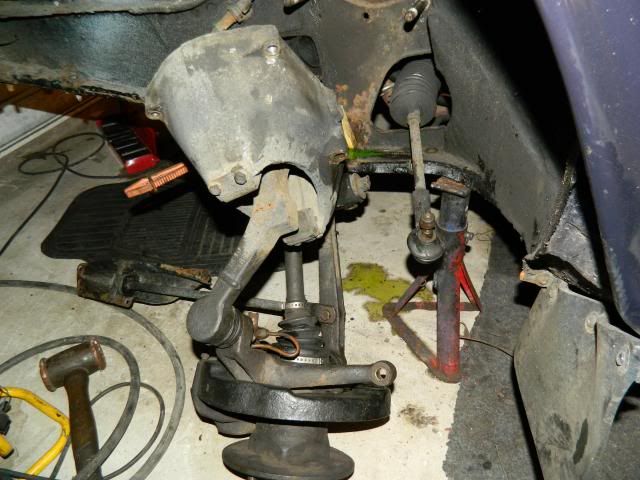 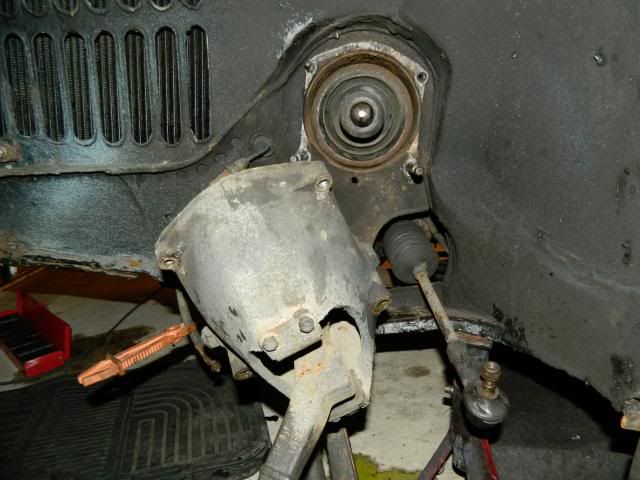 Parts and missing tools should turn up tomorrow, so carburettors off for access tomorrow evening and then the fun can start properly. Chris. |
|
|
|
Post by dave1800 on Aug 28, 2013 1:51:59 GMT
That reminds me some time ago I asked why it is essential to have a polythene seal between the tie rod bracket and gusset plate. On recent postings by several members I have seen no evidence of them? Looks like a fun times ahead  David Anyway, now got the front suspension apart. Well, pulled the whole lot off in one big lump to tell the truth. Disconnected the brake flexi hose and the tie bar housing (pivot bolt through the tie bar and the lower arm absolutely will not move) and wiggled it all out as one. Chris. |
|
|
|
Post by dave1800 on Aug 28, 2013 2:22:50 GMT
Hi Tommy
Nice to hear the good news. Are you planning to sort out the blue car before winter descends on Norway again.
Regards
David
[/quote]
Not at all:-)
I still drive the white 1800 every day, and have had very little fuss with it since April. Since putting in the other engine the bearing noise has gone, too:-)It is my experience too, that cars which have little attention to them behave the best:-)
Regards, Tommy[/quote]
|
|
|
|
Post by Penguin45 on Aug 29, 2013 0:15:06 GMT
New displacer turned up today - exceptional service from Tony Wood, really pleased with that. Displacer is now fitted and suspension reassembled, brake line back on and hydro hose reconnected. Float valve in carburettor replaced, so they'll go back on tomorrow evening. Snoopy11 is popping over, so we can have a fun evening pumping it all back up again. 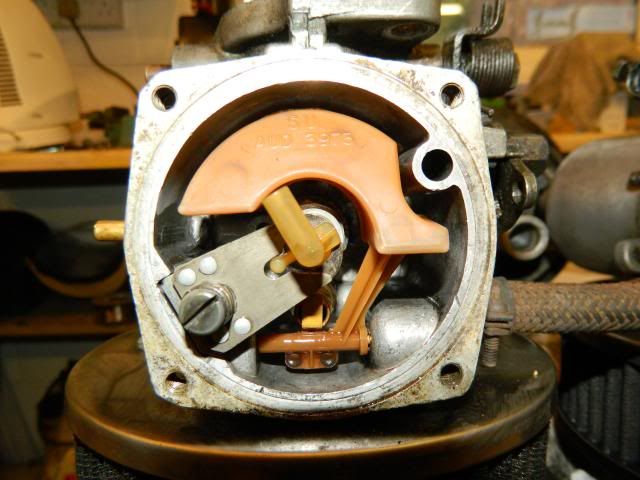 Underneath an HIF44 - remove screw at 7 o'clock to drop the jet out of the way. 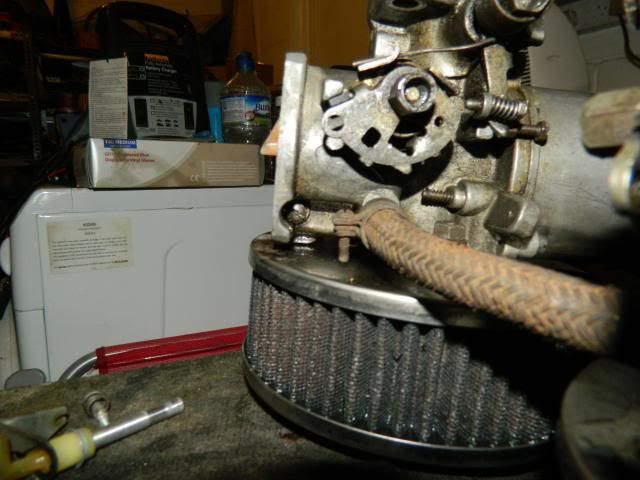 Remove screw left of the pipe to drop the float out. 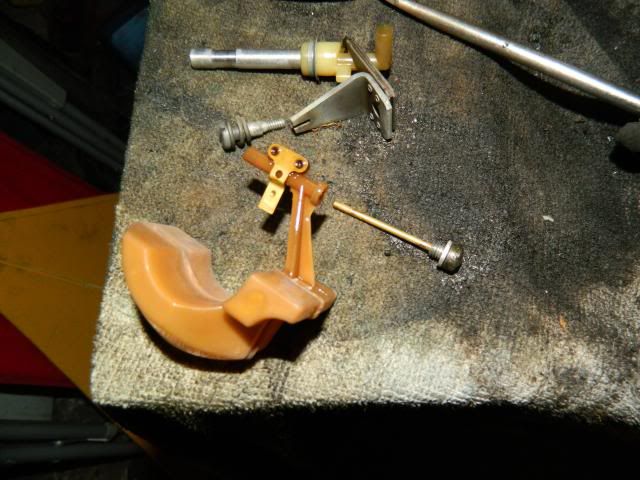 Bits. 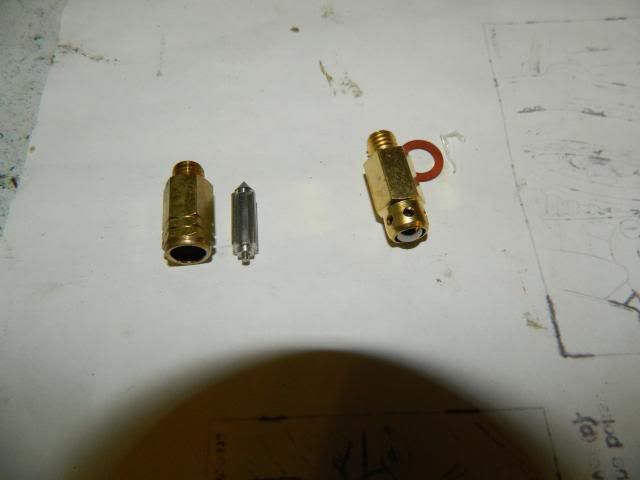 Grose valve on the right, Viton valve to the left. I got this wrong - I have replaced the Grose with the Viton. 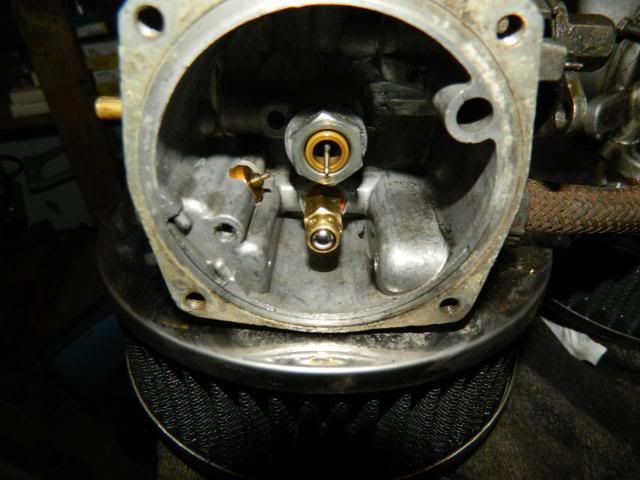 Grose valve in situ before changing it - just below the needle in the centre.  Displacer sits down this tube.Wire brush and rust converter followed - hopefully this won't have to come out for a while. 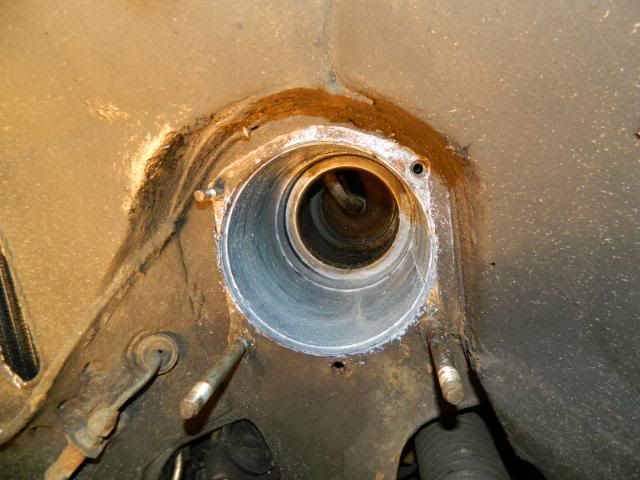 Very blue. Gave it a blow over with the Very Tough Paint just to seal the surface and shot the displacer home. The hardest part of the entire operation was persuading the knuckle (Stick with ball on the end) to stay in the displacer housing whilst it was all pushed back home. When I finally managed to free it from the old displacer, I found that it had a spring behind it - this made keeping it all together quite tricky. Eventually, I got the suspension housing partially on the studs and wiggled the the knuckle into place. This is where a compressor comes into its own. Once balanced together, you can go ZAP! with the windy gun and it's all done.  Classic failure of the old displacer - you can just about make out where the hose has ruptured in the body of the unit. P/ex to be returned to Tony on Sunday. So, bleed front caliper tomorrow, put carbs back on and pump it all back up. Easy peasy........ Chris. |
|
|
|
Post by Penguin45 on Aug 29, 2013 23:45:46 GMT
Well, she's up and level again. An awful lot of pumping with the grease gun pump, but we did it. Mark (Snoopy11) has significantly improved my little pump with a far more robust hose and connector, so we got there. It's always interesting when somebody else works on your car, as they see things that you don't.
We got the nearside more or less up to the right height when Mark commented that the off side was much higher. Not having touched the offside suspension in a few years, I pooh-poohed this suggestion. We had a little blast round the local country lanes just to get everything moving again, then re-measured. Nearside just about spot on, offside 134" too high. Interesting, as I had simply levelled the car to the offside suspension when I did the displacer last time.
Always worth listening to other people's opinions.
And the bad news is that that d@mn carburettor is still tiddling fuel out of the overflow. Otherwise, she's sorted.
My thanks to Mark for taking the time to pop over this evening. We had a bit of fun and achieved quite a bit.
Chris.
|
|
|
|
Post by dave1800 on Aug 30, 2013 2:45:41 GMT
Chris That is a huge amount - I wonder what the excess pressure was and if that caused the failure? Has it had any effect on the rear height now the front is correct? People including Tommy, Andrew and hopefully me soon are "on their own" as far as getting opinions from others are concerned which makes this forum support all the more important I feel. David Nearside just about spot on, offside 1 34" too high. Interesting, as I had simply levelled the car to the offside suspension when I did the displacer last time. Always worth listening to other people's opinions. Chris. |
|
|
|
Post by dave1800 on Aug 30, 2013 2:56:38 GMT
Do you find the HIF carb an advantage over the HS? I believe the HIF has bushes for the throttle spindle so avoids the air leak through wear, but it looks more complex and perhaps unreliable with the temperature compensation mechanism. My Ambassador carbs were problematical, but so was the rest of the car  I wonder why you need to bleed the front caliper, wasn't it possible to tie this up out of the way? David Displacer is now fitted and suspension reassembled, brake line back on and hydro hose reconnected. Float valve in carburettor replaced, so they'll go back on tomorrow evening. Snoopy11 is popping over, so we can have a fun evening pumping it all back up again.  Underneath an HIF44 - remove screw at 7 o'clock to drop the jet out of the way.  Remove screw left of the pipe to drop the float out.  Grose valve in situ before changing it - just below the needle in the centre. [ Chris. |
|
|
|
Post by tommydp on Aug 30, 2013 6:54:47 GMT
Well done, Chris! You've been busy! I also prefer to remove the complete assembly when going into the front displacers. I usually hang the caliper out of the way, on the inner wing. I've also struggled fitting the knuckle joint. It may be easier if an assistent pushes the displacer against the assembly, through the "displacer tunnel", while guiding the displacer hose throught the tunnel at the same time.
I have little experience with the HIFs. I did however dismantle a pair a while ago, helping out an elderly Princess 2200 owner. We had some serious trouble stopping leak from below one of the carbs even with a new rubber gasket. In the end, we found the bottom lids were not straight at all. Filed them straight and no more leaks. In addition, someone had connected the vacuum advance pipe to the overflow outlet on one of the carbs, rather than under the carb:-) I must confess, the HS seems simpler and easier to maintain to me.
Interesting issue with the Hydrolastic. I have some similiar experiences too, which makes me believe there is far more to the Hydrolastic system, and especially the displacers, than meets the eye. My white one is really spot on suspension wise, and it works as it should. Floats on fluid for sure! The trim height is 37,8ish all the time (well, when the car is level of course:-) After taking out the engine, and putting the other in, the left hand front was way higher than it should, when the car was back on the ground and engine in.. Also of course, low in the left rear corner. Driving on the road the floating feel was absent. (I did tighten the rubber joint nuts evenly with the drive shaft straight) I found it strange and it reminded me of the blue one, which occasionally has had this phenomen... I decided to drive it to see if it settled, and after a few days it was back to normal. It has now got the floating feel and the trim height is fine.
I guess the moral of the story is to block the front suspension arm from moving down when changing the engine. However the blue one seems to have this condition almost permanently, on the left side. When this occures, it appears to me the front damping on the affected side is very stiff, while the rear is very soggy. Could the displacer stick in some way? I mean, there is a valve in there? Perhaps this is what happened to yours too? It falls down on one side, as a result of this it raises on the opposite side and the displacer(s) on this side stick(s) in raised position, also when you pump the other side up. Just a thought...
Ok! Enough for now! Good luck with the carbs:-)
Regards, Tommy
|
|
|
|
Post by threelitre on Aug 30, 2013 11:22:50 GMT
I guess the moral of the story is to block the front suspension arm from moving down when changing the engine. However the blue one seems to have this condition almost permanently, on the left side. When this occures, it appears to me the front damping on the affected side is very stiff, while the rear is very soggy. Could the displacer stick in some way? I mean, there is a valve in there? Perhaps this is what happened to yours too? It falls down on one side, as a result of this it raises on the opposite side and the displacer(s) on this side stick(s) in raised position, also when you pump the other side up. Just a thought... We once had a displacer fitted to the LH front of my father's crab, that seemed to have a one-way valve installed: During driving it would receive some fluid when the rear wheel went over bumps, but the fluid would not go back - so jacking up the corner of the car. We did not find the fault in the unit (it was one received from Tony Wood with a new hose clamped onto it and had this fault immediatly after installation). It acted a bit like it happens occasionally with brake hoses that are locking up inside. While the garage men scratched their head how to extract the unit that would not let the fluid go, the blockage went and it could be taken out as if nothing has happened.... Sure enough, coil springs are pretty boring in comparison! Regards, Alexander |
|
|
|
Post by Penguin45 on Aug 30, 2013 12:12:01 GMT
Do you find the HIF carb an advantage over the HS? I believe the HIF has bushes for the throttle spindle so avoids the air leak through wear, but it looks more complex and perhaps unreliable with the temperature compensation mechanism. My Ambassador carbs were problematical, but so was the rest of the car  I wonder why you need to bleed the front caliper, wasn't it possible to tie this up out of the way? David Why HIFs? Bargain is the answer! I am led to believe that once set up, they stay in tune pretty much; unlike the HS carbs which will drift out. Car is barely out in the depths of winter, so haven't really noticed the effects of the compensator mechanism. As for the brake caliper, it was quicker and easier to clamp and disconnect the hose, than to remove the caliper. As I said, I simply pulled the entire suspension, drive shaft and tie bar clear. Picked up another shut-off valve this morning, so the carbs will be off again this evening. It will be done for Sunday. Chris. |
|















